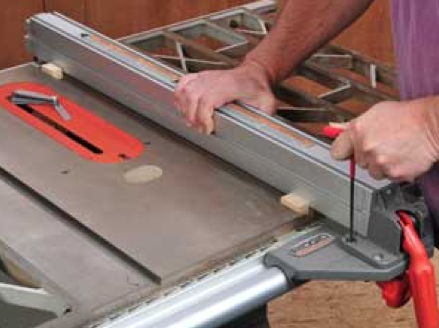
I have a General contractor’s saw, and at our last woodworkers show, I was told to allow .003″ to .010″ more gap between the blade and the fence at the out-feed from the blade than at the infeed (so that the wood would not bind and/or kick back). Do I re-set my blade every time I move the fence to the other side of the table? Is there a better way of setting up?
Michael Dresdner: I agree – I see that as a problem too. My saw is set up with zero clearance (no gap at all). That way I get clean cuts with the fence on either side of the blade.
Rob Johnstone: Ian Kirby in the June Woodworker’s Journal (Table Saw Basics) described how to properly align a table saw fence. The key point was that it needed to be exactly parallel to the fence: no runout whatsoever. The most important thing you can do to prevent kickback is to use a splitter.
Ellis Walentine: I agree with Rob and Ian. Nothing is to be gained by skewing your fence. All that does is to allow a finite amount of clearance for reactive wood, which, according to Murphy’s Law, always defies prediction. Use a splitter to guard against kickback when ripping.





